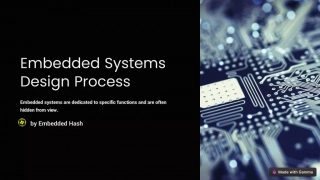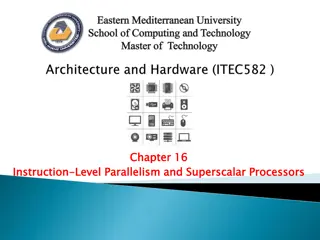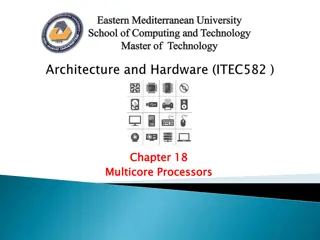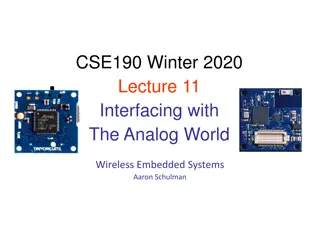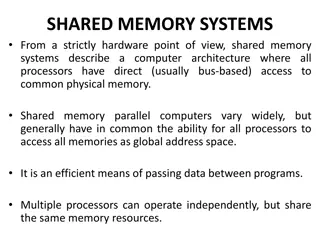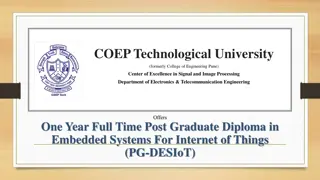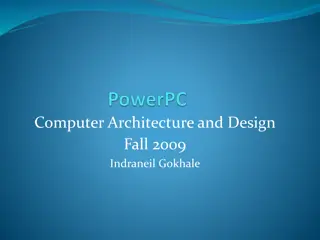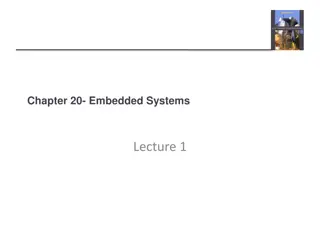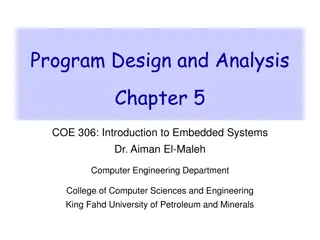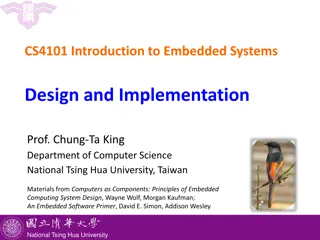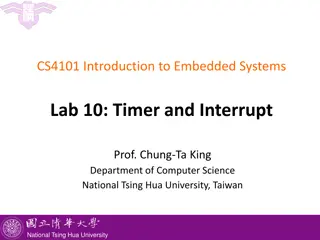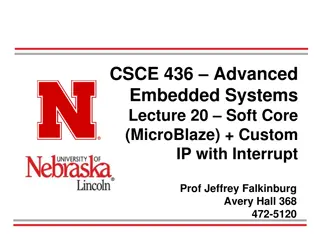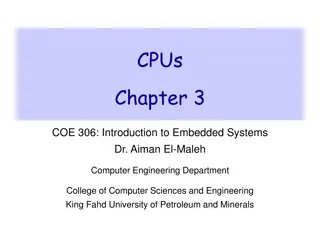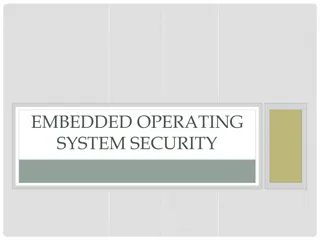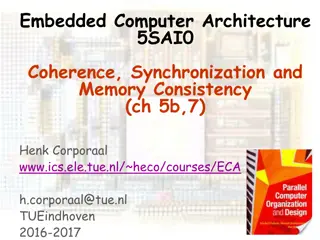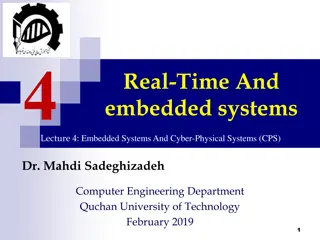
Exploring Embedded Systems: A Comparison with General Purpose Processors
Dive into the world of embedded systems by comparing them with general purpose processors. Learn about the differences in purpose, design, programmability, performance, and key features such as power, cost, speed, and size. Understand the unique characteristics that distinguish embedded systems from general purpose computers.
Download Presentation

Please find below an Image/Link to download the presentation.
The content on the website is provided AS IS for your information and personal use only. It may not be sold, licensed, or shared on other websites without obtaining consent from the author. If you encounter any issues during the download, it is possible that the publisher has removed the file from their server.
You are allowed to download the files provided on this website for personal or commercial use, subject to the condition that they are used lawfully. All files are the property of their respective owners.
The content on the website is provided AS IS for your information and personal use only. It may not be sold, licensed, or shared on other websites without obtaining consent from the author.
E N D
Presentation Transcript
Subject Name Department : ECE Created By: Jagannath International Management School Vasant Kunj, New Delhi - 110070 (Affiliated to Guru Gobind Singh Indraprastha University, New Delhi) Recognized u/s 2(f) by UGC & Accredited with A Grade by NAAC Participant of UNGC & UNPRME, New York ISO 9001:2015 Quality Certified
Subject: Embedded Systems Topic: : Comparison of Embedded Systems with general purpose processors
List of Topics to be covered(Optional) Processor Controller Embedded Systems Comparison
General Purpose Processors A general purpose computer system is what you think of when someone says the word "computer." The defining feature of a general purpose computer is that it can be reconfigured for a new purpose. In the early days of digital computers, this involved actually rewiring the entire system. Today, most end users aren't even aware that this is happening, as the process has become completely transparent.
Embedded Systems An embedded system is a little harder to pin down. It is dedicated to a single purpose, or a small set of purposes. Embedded systems can be found in nearly every single piece of modern electronics--in fact, they are the electronics. A modern television, a portable music player, a computer- controlled air conditioning system or virtually anything made in the last 10 years that isn't a general purpose system and requires electricity: that is what an embedded system is.
Comparison The difference between an embedded system and a general purpose computer system is one of purpose, and to a much lesser extent, design. While a general purpose system can be used for many things, an embedded system is only meant for one purpose Intended to run a fully general set of applications Runs a few applications often known at design time End-user programmable Not end-user programmable Faster is always better Operates in fixed run-time constraints, additional performance may not be useful/valuable Differentiating features: Power Cost (eg RM2 vs RM2.50) Size Differentiating features: Speed (need not be fully predictable) Software compatibility Cost (eg RM3k vs RM5k per
Microprocessor vs Microcontroller Microcontroller: A chip that contains all the components of a computer processor, memory and input/output Less flexibility Less component count in system Less powerful Microprocessor A chip that contains only the processor Need other chips to make a working system More flexible Can have very few I/O or many I/O devices using the same processor chip

